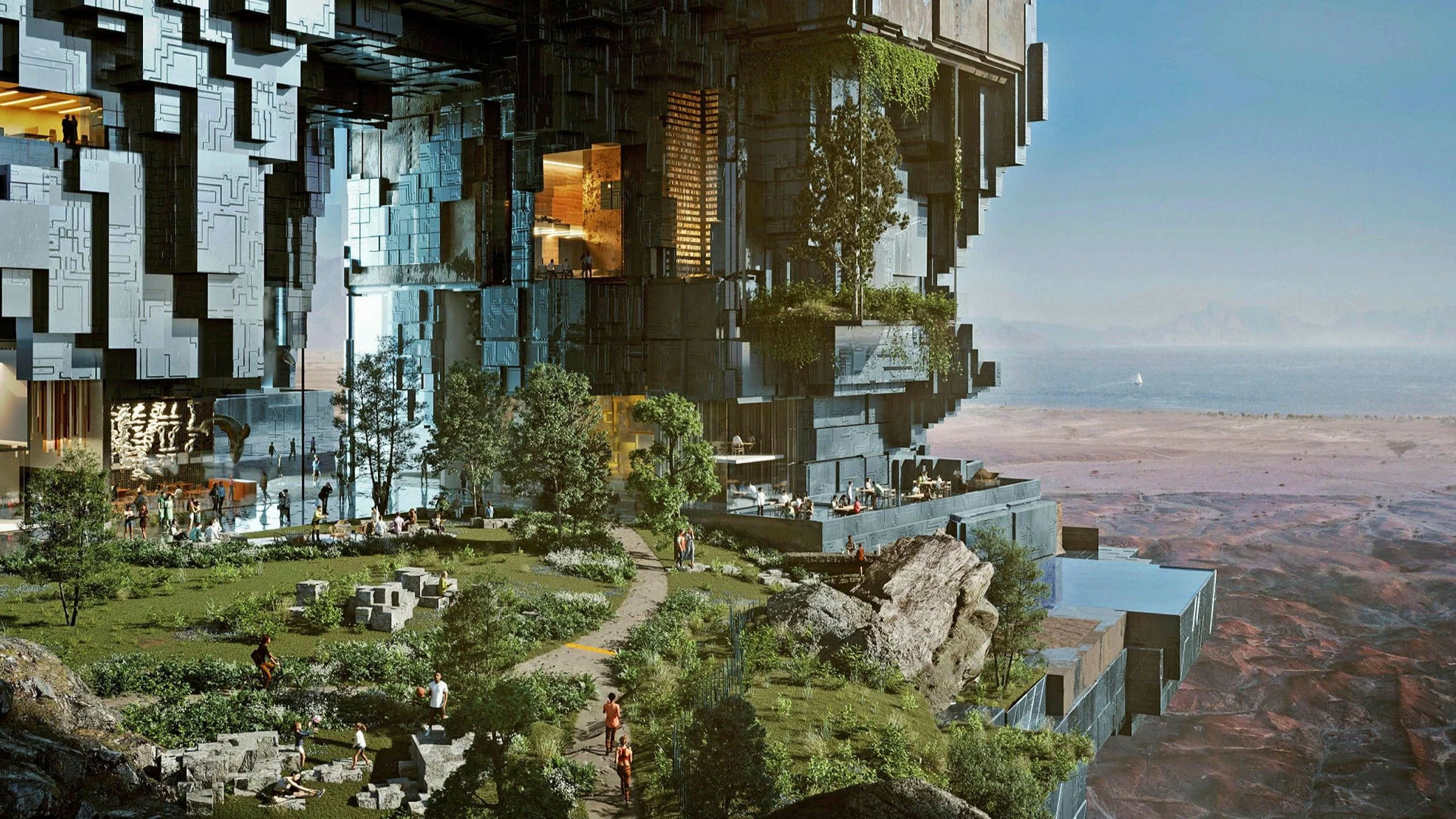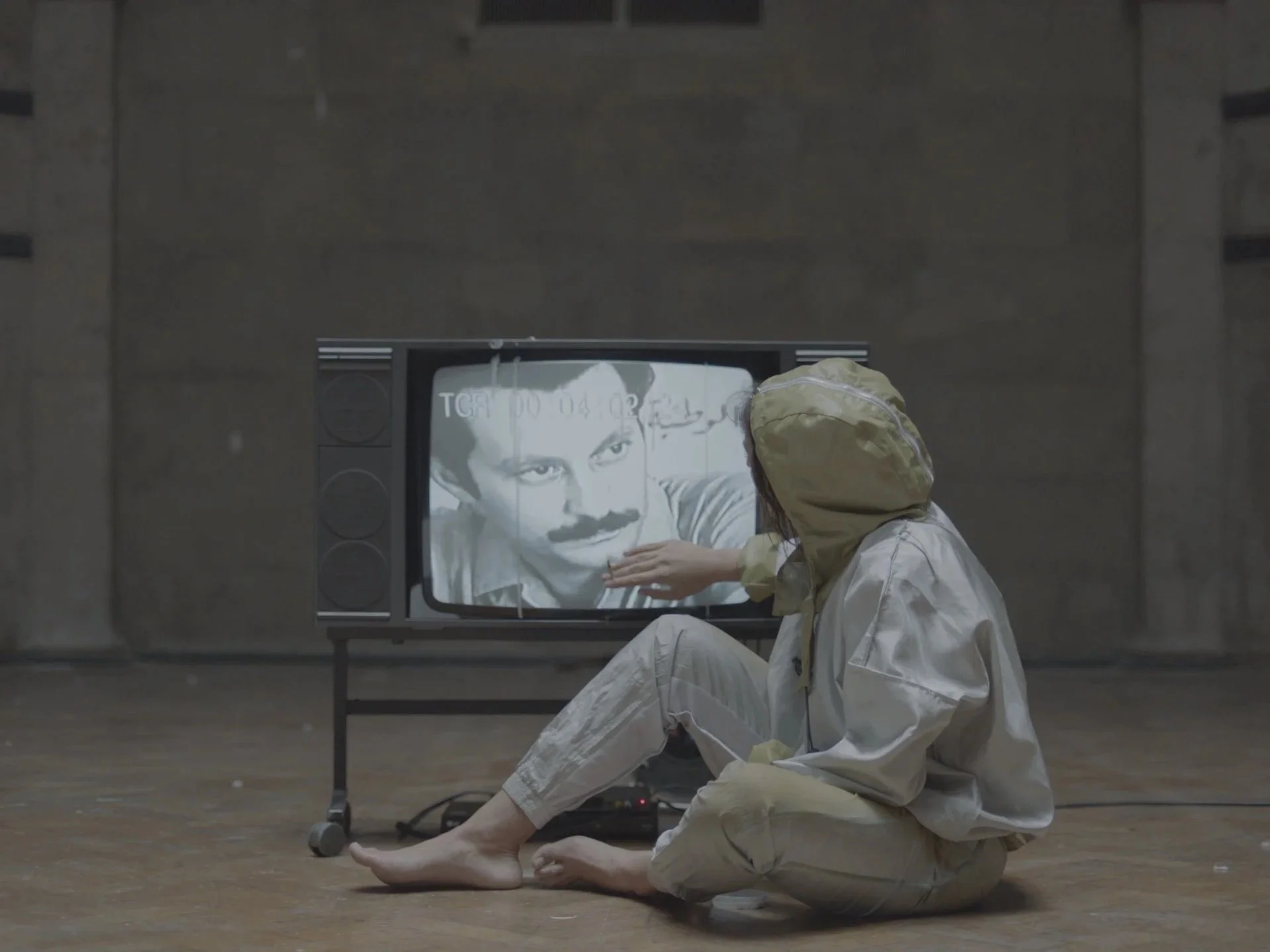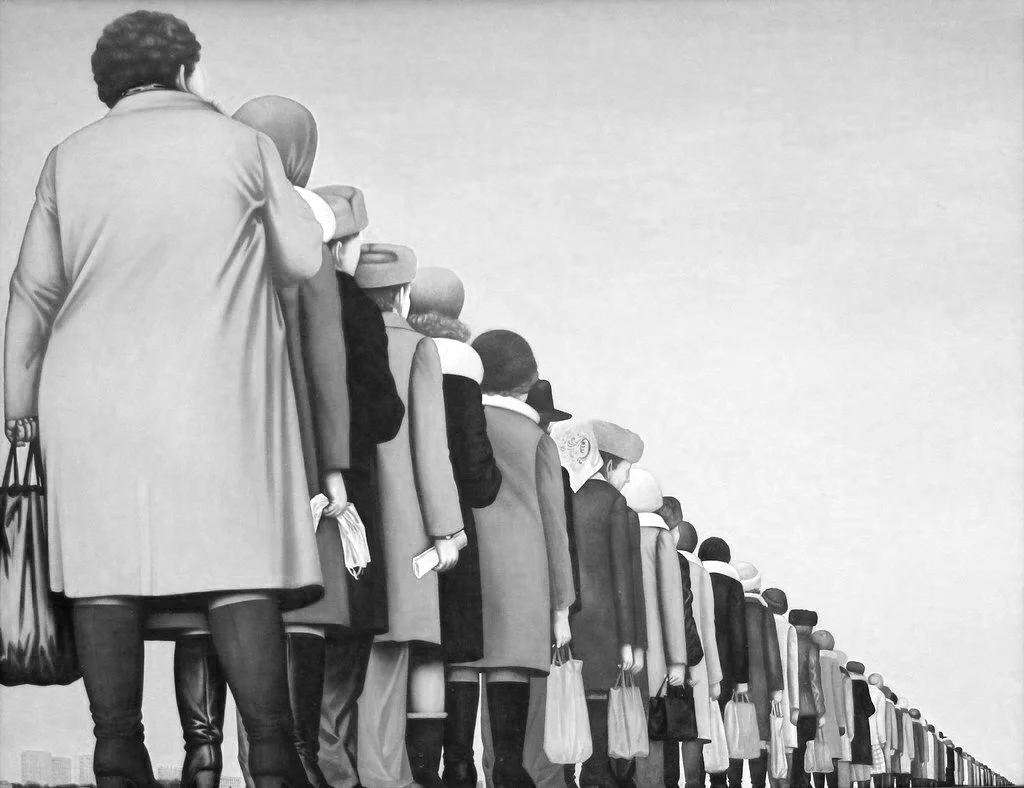Real Life Dystopia
A literary and creative movement known as "Gulf Futurism" developed in the Gulf region in the twenty-first century. The movement is characterized by its examination of aspects relevant to technology, society, and the future. It combines elements of science fiction, fantasy, and surrealism to envision dystopian worlds that are influenced by the social and political realities of the Gulf region. Basma Abdel Aziz (Egyptian writer) and Fatima Al Qadiri (Kuwaiti - American musician) contend that the Gulf states are already witnessing significant social, economic, and technical transformations and that these developments are influencing how people in the region think about the future. The phrase "Gulf Futurism" implies that the future is not a far-off and intangible idea, but rather something that is already happening in the present.
Sophia al Maria
Sophia Al-Maria is a Qatari-American filmmaker, artist, and writer. Al-Maria distinguishes herself by emphasizing the visual and aural elements of deep time and post-human time. She creates a number of bizarre, post-apocalyptic landscapes that blur the lines between the present and the future by illustrating the complex relationship between dependency on fossil fuels, wealth, and ecological destruction. Both of her works, "The future was Desert" and "Whale is a whale is a whale," investigate how the Arabian Gulf region has been impacted by industrialization, consumerism, reactionary Islam, wealth inequality, technological isolation, and historical erasure. This area of the Gulf has developed into a scene of interior wastelands, urban master plans, and environmental degradation, acting as a cautionary tale for humanity's future.
Fatima Al Qadiri with Sophia al Maria
"How Can I Resist U" sheds light on the Gulf paradox, which characterizes the region's daily life. The contradiction between progress and conservatism is a recurring theme in the work of Al-Maria. One half of the duo behind the video, Al Qadiri, argues that although the Gulf Region tries to uphold the moral values of the past, it is continuously looking forward. This dynamic creates a complicated cultural environment that is always changing and serves as a rich source of inspiration for artists. The malls in the Gulf region have evolved into a center for cultural subcultures that defy conventional standards despite the region's strong adherence to traditional gender roles. In essence, Al-video Maria's emphasizes the intricacy of the Gulf conundrum and how it affects regional daily life. Additionally, it demonstrates how subcultures may thrive in unexpected places and serve as a form of empowerment for people who feel marginalized by conventional norms.
The Queue
In Basma Abdel Aziz's dystopian novel "The Queue," readers are transported to a society where people are controlled by an oppressive government. The story takes place in an unidentified city that has been subjugated to an oppressive government that has total control over every aspect of the lives of its inhabitants. For numerous tasks, including getting medication, travel permits, and even the right to publicly voice their thoughts, citizens must wait in line for the government's approval for hours at a time.
The gate appears repeatedly throughout the book and plays a crucial role in the plot. It serves as the entry point for citizens seeking government authorization for a range of activities, including getting prescription drugs or travel permits. The gate is a strong representation of the regime's control over its population because it acts as a physical obstruction that must be surmounted in order to access essentials. Despite the gate's significance as an instrument of tyranny, it also becomes a symbol of hope and resistance for the story's characters. They start to think of the gate as a representation of the potential for change as they wait in line day after day for it to open. The gate serves as a focal point for their aspirations and they start to view it as a representation of their capacity to foil governmental authority.
Larissa Sansour
A short film and a picture series combine to create the thought-provoking work of art known as The Nation Estate. It offers a distinctive and imaginative viewpoint on the question of Palestinian independence in the Middle East and was created in 2012 by the artist Larissa Sansour. The major goal of the project is to provide an abstract, dystopian perspective on the existing impasse in the area. An arabesque electronic soundtrack, real actors, and computer-generated graphics are all combined in the movie to examine a vertical approach to the Palestinian statehood problem. In this dystopian society, the Nation Estate is the only building that houses the entire Palestinian population. The skyscraper stands in for the Palestinian state, where residents reside in opulent apartments and have access to all of today's conveniences. Sansour offers a distinctive and original viewpoint on the debate over Palestinian statehood by fusing photography and film.



